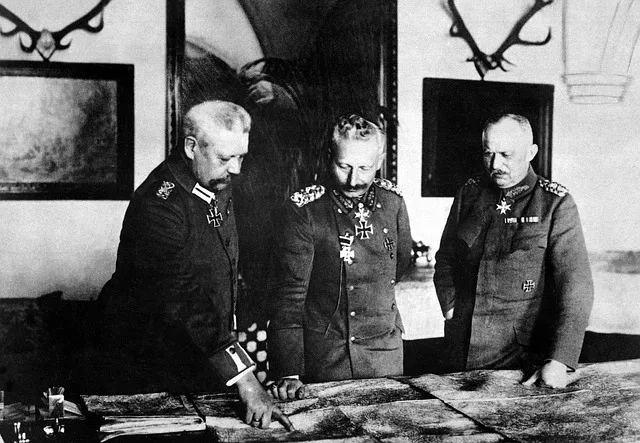Understanding past trauma is key to achieving freedom from its grip. Trauma, whether childhood or adult, can cause dissociation leading to anxiety, depression and PTSD. The Kaiser approach using Eye Movement Desensitization and Reprocessing (EMDR) offers a promising path for healing. Research confirms EMDR's effectiveness in processing traumatic memories, reducing distress and promoting emotional resolution, allowing individuals to reclaim their lives and move towards a brighter future. Kaiser EMDR therapy uses bilateral stimulation to help patients reprocess traumatic memories, significantly reducing symptoms of PTSD and other conditions, while empowering them to regain control over their emotional well-being.
Past traumas can leave lasting wounds, affecting every aspect of our lives. But healing is possible. This article explores how Kaiser EMDR (Eye Movement Desensitization and Reprocessing), a revolutionary therapy, empowers individuals to embrace freedom from past trauma’s grip. From understanding the impact of trauma to navigating the healing process, we’ll delve into the transformative power of Kaiser EMDR in fostering long-lasting recovery.
- Understanding Past Trauma and Its Impact
- Introduction to EMDR Therapy: A Revolutionary Approach
- How Kaiser EMDR Helps in Healing from Trauma
- Navigating the Process: Steps Towards Freedom
- Overcoming Barriers and Achieving Long-Lasting Results
- Embracing a New Life: Living Free from Past Trauma's Grip
Understanding Past Trauma and Its Impact

Understanding past trauma and its impact is a crucial step in embracing freedom from it. Trauma, whether experienced as a child or in adulthood, can leave deep scars that affect every aspect of one’s life. It often manifests as dissociation, causing individuals to feel detached from their thoughts, emotions, and surroundings. This can lead to various mental health issues such as anxiety, depression, and post-traumatic stress disorder (PTSD). The impact is amplified when trauma goes untreated, creating a complex web of negative thought patterns and behaviors that can be challenging to break free from.
The Kaiser approach, utilizing techniques like Eye Movement Desensitization and Reprocessing (EMDR), offers a promising path toward healing. EMDR has gained recognition as an effective non-invasive trauma healing method, addressing the symptoms associated with dissociation disorders. The latest research on EMDR effectiveness underscores its ability to help individuals process traumatic memories, reduce distress, and promote emotional resolution. By employing the EMDR protocol, people can begin to reclaim their lives, breaking free from the power of past traumas and moving towards a more fulfilling future.
Introduction to EMDR Therapy: A Revolutionary Approach

EMDR Therapy, short for Eye Movement Desensitization and Reprocessing, is a revolutionary approach to healing from past traumas. Developed by Francine Shapiro in the 1980s, this therapy uses bilateral stimulation—such as side-to-side eye movements, tones, or taps—while patients recall traumatic memories. This process helps individuals reprocess and reframe these memories, reducing their emotional intensity and associated distress.
As one of the best practices for EMDR protocol implementation, Kaiser Health has recognized its effectiveness in treating a range of conditions, including post-traumatic stress disorder (PTSD). The latest research on EMDR effectiveness supports its ability to significantly reduce symptoms and promote resilience. Kaiser EMDR therapy benefits extend beyond symptom reduction; it empowers individuals to regain control over their emotional well-being and live more fulfilling lives.
How Kaiser EMDR Helps in Healing from Trauma

Kaiser EMDR, a specialized therapeutic approach, offers profound healing for individuals navigating trauma’s aftermath. This methodic process facilitates the brain’s natural healing mechanisms by reprocessing traumatic memories and associated distressing emotions. Through a structured set of protocols, Kaiser EMDR helps clients gain new insights into past events and reduce their emotional intensity.
The effectiveness of this therapy lies in its ability to accelerate change while fostering resilience. Short-term EMDR interventions can lead to significant improvements in symptoms related to post-traumatic stress disorder (PTSD). Accessing Kaiser EMDR support groups further enriches the healing process, providing a safe space for sharing experiences and strengthening coping mechanisms. For those interested in becoming practitioners, emdr certification programs approved by recognized bodies offer comprehensive training, ensuring professionals are equipped to guide others on their journey towards trauma recovery.
Navigating the Process: Steps Towards Freedom

Navigating the process of healing from past traumas involves several key steps. Initially, it’s crucial to acknowledge and accept that trauma has occurred, recognizing its impact on your life. This might require seeking professional help, where therapists like Kaiser network EMDR specialists can offer specialized support. Techniques such as Eye Movement Desensitization and Reprocessing (EMDR) have proven effective in treating post-traumatic stress disorder (PTSD).
The journey towards freedom includes exploring and processing these memories safely. Through therapy, individuals learn to reframe traumatic experiences, reduce their emotional intensity, and gain a sense of control. Alternative therapies for PTSD treatment, including EMDR for children and adolescents, offer innovative approaches to healing. By integrating these steps into your recovery plan, you can embark on a path towards a more peaceful and fulfilling life, leaving the burdens of the past behind.
Overcoming Barriers and Achieving Long-Lasting Results

Overcoming barriers to healing from past traumas is essential for achieving long-lasting results in mental health recovery. Kaiser EMDR (Eye Movement Desensitization and Reprocessing) stands out as a powerful therapy method, offering unique benefits that enhance traditional cognitive behavioral therapy. This synergistic approach combines elements of both techniques, allowing individuals to process traumatic memories more effectively. By engaging in EMDR therapy, patients can experience profound mental health benefits, such as reduced symptoms of PTSD, anxiety, and depression.
The Kaiser member benefits for mental health services further bolster the accessibility and impact of this treatment. Many Kaiser plans include coverage for EMDR therapy, making it easier for individuals to access these life-changing services. This comprehensive support system enables people to embrace freedom from their past traumas, fostering a sense of resilience and empowerment that resonates far beyond the therapy session.
Embracing a New Life: Living Free from Past Trauma's Grip

Embracing a new life free from the grip of past traumas is a transformative journey. Many people struggle with the aftermath of traumatic events, carrying emotional burdens that hinder their ability to live fully and joyfully. However, innovative approaches like Kaiser EMDR offer hope and healing. This therapy integrates powerful EMDR techniques with body work, addressing not only the mind but also the profound impact trauma can have on our physical being. By tapping into this unique blend of methods, individuals can experience profound releases, overcome barriers, and reclaim their sense of safety and well-being. The Kaiser EMDR benefits extend far beyond symptom reduction; it empowers people to reintegrate their traumatic memories in a safe space, fostering true emotional healing and allowing them to step boldly into a future unencumbered by the past.
Past traumas can significantly shape our lives, but it is never too late to embrace freedom and heal. Kaiser EMDR therapy offers a revolutionary approach to navigating the process of healing from trauma, empowering individuals to overcome barriers and live free from the grip of their past. By understanding the impact of past trauma and following the steps towards freedom, as outlined in this article, one can embark on a journey of transformation and embrace a new, resilient life.






